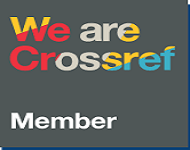Organizational Change in Elementary School. Does Teacher Commitment Important?
DOI:
https://doi.org/10.33394/jp.v9i4.5434Keywords:
Organizational, Change, Teacher, Commitment.Abstract
This study aims to analyze theacher commitment’s effect on organizational change in elementary school. This study used a quantitative approach using simple linear regression test data analysis techniques. The populations of this study were teachers and principals of elementary schools in East Java with a total population of 55,152. The research sample was 396 respondents with simple random sampling method. The research questionnaire was prepared using a Likert scale of 1-5 and distributed via Google form. The results of this study indicated that teacher commitment influences organizational change in elementary schools. Moreover, affective commitment, normative commitment and continuing commitment impacted organizational changes in elementary schools.
References
Balyer, A. (2018). Organizational Commitment : Teachers ’ Perceptions in Turkey Örgütsel Adanm ış l ı k : Türkiyedeki Ö ğ retmenlerin Alg ı lar ı O rganizational Commitment : Teachers ’ Perceptions in Turkey Örgütsel Adanmışlık : Türkiyedeki Öğretmenlerin Algıları. March.
Chen, S., & Ke, Z. (2014). Why the leadership of change is especially difficult for Chinese principals: A macro-institutional explanation. Journal of Organizational Change Management, 27(3), 486–498. https://doi.org/10.1108/JOCM-07-2013-0121
Day, C. (2013). The new lives of teachers. Back to the Future: Legacies, Continuities and Changes in Educational Policy, Practice and Research, 57–74. https://doi.org/10.1007/978-94-6209-240-2_4
Elizur, D., & Koslowsky, M. (2001). Values and organizational commitment. International Journal of Manpower, 22(7), 593–599.
Fullan, M. (2006). Advance praise for the new meaning of educational change (4th ed.).
Gardner, B., & Ollis, D. (2015). “Change in schools it’s more like sort of turning an oil tankerâ€: Creating readiness for health promoting schools. Health Education, 115(3–4), 377–391. https://doi.org/10.1108/HE-03-2014-0037
Hargreaves, A. (2005). Educational change takes ages: Life, career and generational factors in teachers’ emotional responses to educational change. Teaching and Teacher Education, 21, 967–983.
Helvaci, M. A., & Kiliçoğlu, A. (2018). The Relationship Between the Organizational Change Cynicism and Organizational Commitment of Teachers. Journal of Education and Training Studies, 6(11a), 105. https://doi.org/10.11114/jets.v6i11a.3806
Hoy, W., & Sweetland, S. (2001). Designing Better Schools: The Meaning and Measure of Enabling School Structures. Educational Administration Quarterly - EDUC ADMIN QUART, 37(08), 296–321.
Hulpia, H., Devos, G., & van Keer, H. (2011). The relation between school leadership from a distributed perspective and teachers’ organizational commitment: Examining the source of the leadership function. Educational Administration Quarterly, 47(5), 728–771. https://doi.org/10.1177/0013161X11402065
Jay Becker, H. (2000). Teacher Professional Engagement and Constructivist-CoMpatible Computer Use Center. for Research on Information Technology and. March. http://www.crito.uci.edu/tIc/findings.html
King, F., & Stevenson, H. (2017). Generating change from below: what role for leadership from above? Journal of Educational Administration, 55(6), 657–670. https://doi.org/10.1108/JEA-07-2016-0074
Lines, R., Selart, M., Espedal, B., & Johansen, S. T. (2005). The production of trust during organizational change. Journal of Change Management, 5(2), 221–245. https://doi.org/10.1080/14697010500143555
Liu, P. (2015). Motivating teachers’ commitment to change through transformational school leadership in Chinese urban upper secondary schools. Journal of Educational Administration, 53(6), 735–754. https://doi.org/10.1108/JEA-02-2014-0026
Lunenburg, F. C. (2010). Approaches to Managing Organizational Change Lewin’s Three-Step Change Model. International Journal of Scholarly Academic Intellectual Diversity, 12(1), 1–10.
Meyer, J. P., Allen, N. J., & Smith, C. A. (1993). Commitment to Organizations and Occupations: Extension and Test of a Three-Component Conceptualization. Journal of Applied Psychology, 78(4), 538–551. https://doi.org/10.1037/0021-9010.78.4.538
Rogers, E. M., Singhal, A., & Quinlan, M. M. (2019). Diffusion of innovations. In An Integrated Approach to Communication Theory and Research, Third Edition. https://doi.org/10.4324/9780203710753-35
Yuet, F. K. C. (2017). Development and Validation of Teachers’ Commitment to Change Scale. International Journal of Academic Research in Business and Social Sciences, 7(7), 164–178. https://doi.org/10.6007/ijarbss/v7-i7/3087
Downloads
Published
How to Cite
Issue
Section
Citation Check
License
License and Publishing Agreement
In submitting the manuscript to the journal, the authors certify that:
- They are authorized by their co-authors to enter into these arrangements.
- The work described has not been formally published before, except in the form of an abstract or as part of a published lecture, review, thesis, or overlay journal.
- That it is not under consideration for publication elsewhere,
- That its publication has been approved by all the author(s) and by the responsible authorities tacitly or explicitly of the institutes where the work has been carried out.
- They secure the right to reproduce any material that has already been published or copyrighted elsewhere.
- They agree to the following license and publishing agreement.
Copyright
Authors who publish with Jurnal Paedagogy agree to the following terms:
- Authors retain copyright and grant the journal right of first publication with the work simultaneously licensed under a Creative Commons Attribution License (CC BY-SA 4.0) that allows others to share the work with an acknowledgment of the work's authorship and initial publication in this journal.
- Authors are able to enter into separate, additional contractual arrangements for the non-exclusive distribution of the journal's published version of the work (e.g., post it to an institutional repository or publish it in a book), with an acknowledgment of its initial publication in this journal.
- Authors are permitted and encouraged to post their work online (e.g., in institutional repositories or on their website) prior to and during the submission process, as it can lead to productive exchanges, as well as earlier and greater citation of published work.
Licensing for Data Publication
-
Open Data Commons Attribution License, http://www.opendatacommons.org/licenses/by/1.0/ (default)






